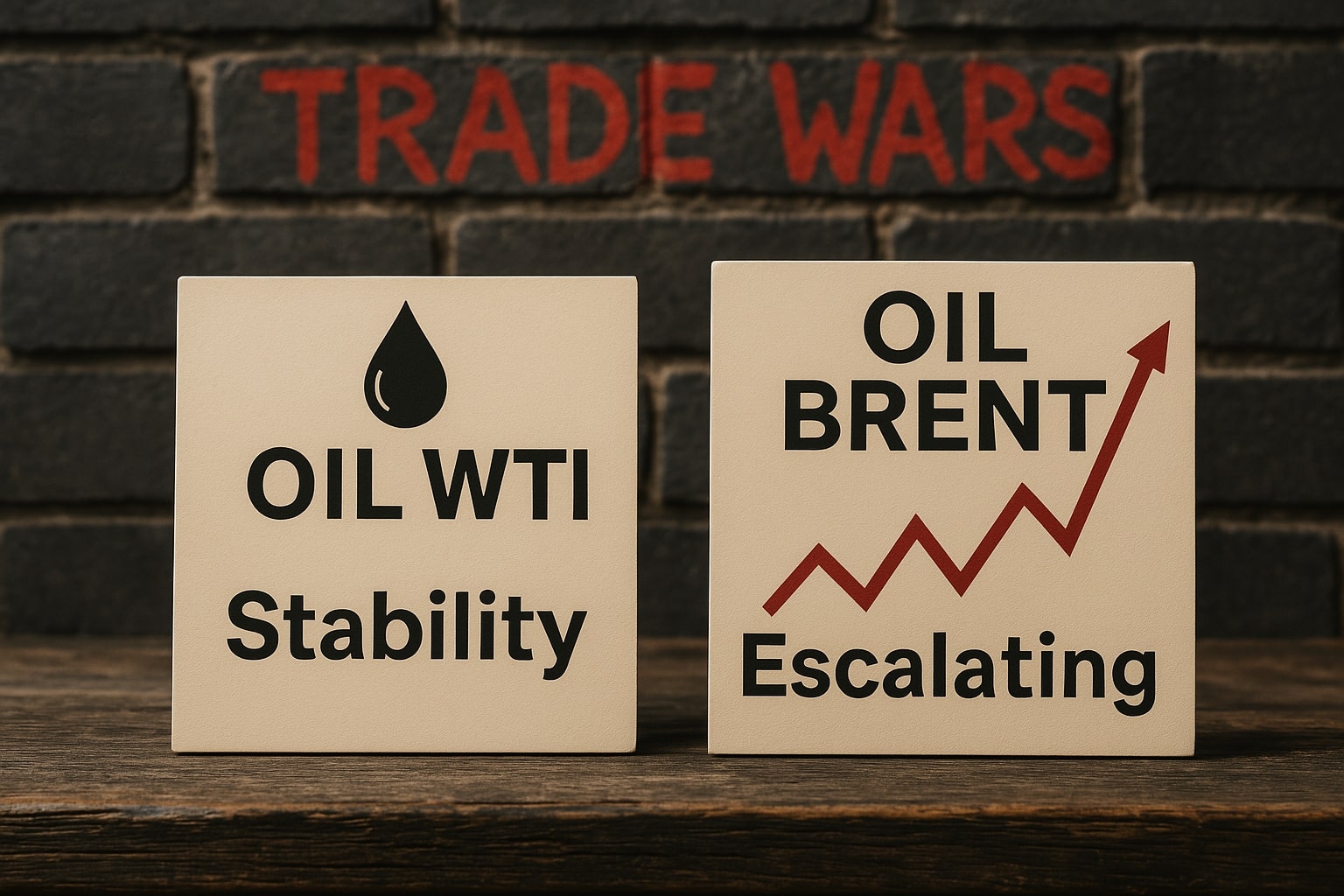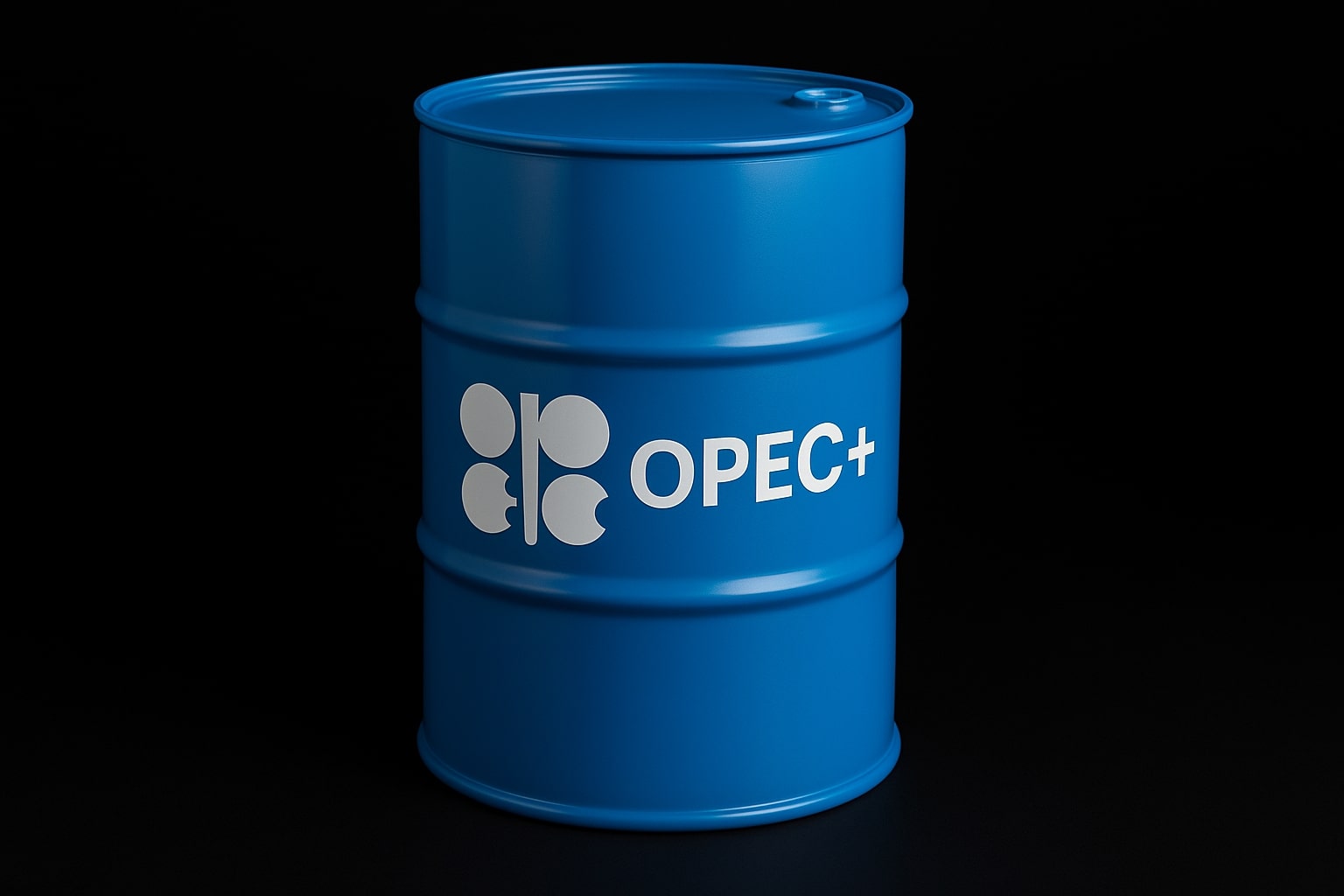Oil Price Struggles Amid Trade War and OPEC+ Turmoil
The global oil market is under significant pressure, driven by a range of geopolitical and economic factors. Since April 3, oil prices have plummeted by approximately 16%, with WTI crude falling below $63 a barrel and Brent crude suffering similar declines. These sharp drops are a direct consequence of escalating trade tensions, notably President Donald Trump's tariff decisions, which have sent ripples across commodity markets. This sudden turbulence, paired with a weakening global economic outlook, presents a particularly challenging environment for oil producers, especially those within the OPEC+ alliance.
Geopolitical Tensions and Oil Price Movements
The primary driver behind the recent volatility in oil prices has been the ongoing U.S.-China trade war. Trump's new tariff announcements have escalated global concerns, pushing oil prices to their lowest levels since the pandemic-induced market chaos. The U.S. has imposed a reciprocal tariff of 34% on Chinese imports, which China has countered with retaliatory measures, raising tariffs on U.S. goods to as much as 84%. This back-and-forth between the world’s two largest economies has sparked fears of a global recession, reducing demand for oil and other commodities.
As the trade war continues to escalate, oil prices have felt the weight of these developments. Even as the U.S. Dollar weakens due to tariff-induced market instability, demand for oil is stifled by the broader economic uncertainty. The price drop is not just a temporary blip; if these trade tensions persist, analysts warn that Brent and WTI could see further declines, potentially dipping below the crucial $50 per barrel mark.
OPEC+ Challenges and Production Cuts
While global oil prices are in a slump, Saudi Arabia, the de facto leader of OPEC+, has been proactive in responding to these challenges. After Trump’s tariff announcement, Riyadh issued a warning shot to both internal and external oil producers. Saudi Arabia has accelerated its plans to unwind some of the production cuts implemented as part of the OPEC+ agreements. The kingdom, along with seven other OPEC+ members, has decided to add 411,000 barrels per day (bpd) to the global supply starting in May, despite already oversupplied markets.
This move is a clear signal from Saudi Arabia to regain control of market share and to send a message to other oil producers who have failed to comply with agreed-upon production cuts. Countries like Iraq, Kazakhstan, and the UAE have been among the worst offenders, consistently exceeding their quotas. This non-compliance has contributed to overproduction, which has compounded the downward pressure on prices.
Furthermore, Saudi Arabia has significantly cut its selling prices for May oil shipments to Asia, marking the largest discount in over two years. The kingdom has reduced the price of its Arab Light grade oil by $2.30 per barrel, a move that is expected to further undercut other sellers and challenge global oil pricing dynamics.
The U.S. Shale Industry Faces Pressure
The current oil price environment has also put the U.S. shale industry in a precarious position. According to a survey by the Federal Reserve Bank of Dallas, U.S. shale producers need an average price of $65 per barrel to drill new wells. With WTI trading below $60 per barrel, many U.S. producers are beginning to scale back operations. If oil prices remain at these levels, or even continue to fall, it is likely that a significant portion of U.S. shale producers will halt new investments, which could have long-term consequences for the industry.
The implications are not just for the U.S. market, but for global oil supply. While the primary goal of Saudi Arabia’s price war may not be to curtail U.S. shale production, it is an unintended consequence that may help the kingdom regain market dominance. However, this approach comes with its own set of risks, especially as Saudi Arabia faces its own economic pressures. The kingdom needs oil prices to stay higher to balance its national budget, which the IMF estimates requires an oil price of $91 per barrel. In contrast, some of the other major OPEC+ members, like the UAE, can balance their budgets with oil prices as low as $50 per barrel. This disparity in budget requirements could make it difficult for Saudi Arabia to sustain a prolonged price war without damaging its own economy.
The Impact of Tariffs on Russia's Oil Revenues
Russia, a key member of OPEC+, has also felt the effects of the ongoing price decline. After the introduction of U.S. tariffs, Russian oil prices fell sharply, with the price of its flagship Urals crude dipping below $53 per barrel. This is significantly lower than the $70 per barrel benchmark that Russia had used for its 2025 budget planning. With oil and gas revenues accounting for a significant portion of Russia’s budget, this decline poses a severe fiscal challenge.
The Kremlin has expressed concern over the situation, especially as the country’s military expenditures have surged in light of the ongoing war in Ukraine. If oil prices continue to fall, Russia could face a financial crisis, forcing the government to borrow heavily or print more money to cover its budget shortfall. These economic pressures could further destabilize the Russian economy and its ability to maintain the conflict in Ukraine.
The Broader Economic Context
In the broader economic context, the drop in oil prices is also being exacerbated by slowing global demand, particularly from China. China, which is the world’s largest importer of oil, has seen a decline in consumption due to weakening economic growth. As Chinese demand for oil decreases, global oil markets are feeling the strain. The trade war, coupled with slower Chinese consumption, is creating a perfect storm for global oil prices, with oversupply and reduced demand pushing prices lower.
The economic ramifications of this turmoil are far-reaching. Oil prices, which had been buoyed by factors such as sanctions on Iran and Venezuela, are now facing an uncertain future. The combination of global overproduction, trade war concerns, and weakened demand has left the oil market in turmoil, with further price declines expected if the current trends persist.
Conclusion
As OPEC+ struggles to maintain unity and discipline, Saudi Arabia is faced with the delicate task of balancing its economic needs with the broader geopolitical and market dynamics. While the kingdom has seized the opportunity to assert its influence on the market, it risks triggering a price war that could backfire. For now, the immediate outlook for oil prices remains bearish, driven by the ongoing trade war, rising supply, and weakening demand. If these conditions continue, WTI and Brent crude could see further declines, challenging the sustainability of the global oil market. The coming months will be critical in determining whether oil prices will stabilize or continue their downward trajectory.




















